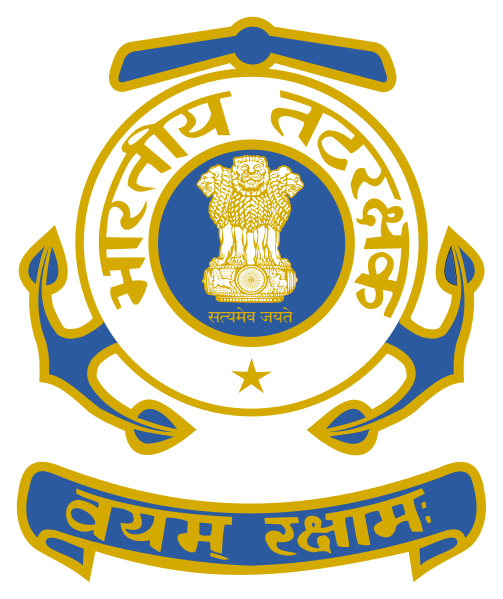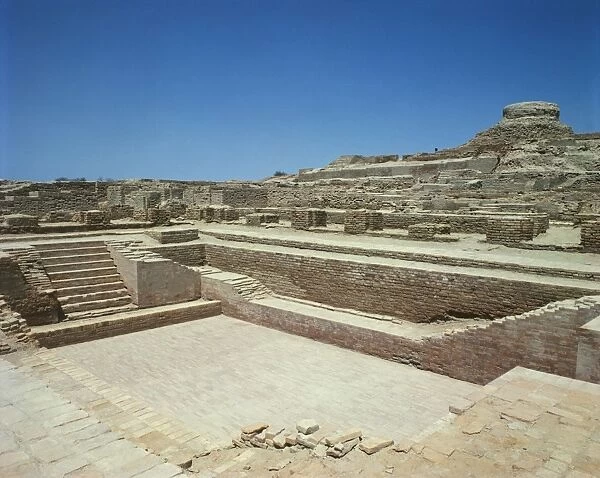Table of Contents
As We know the Indus Valley Civilization was an only civilization whose Impacted the history of India. Some Study already processed by the govt and also detailed study of it.
After the Civilization Studied there are some questions normally frequently asked by some govt exams and other point of view here we will discuss that’s all in detailed facts also.
Why Indus Valley Civilization Grow :-
The Indus Valley Civilization (IVC), also known as the Harappan Civilization & Indus River Valley Civilization, grew and flourished for several key reasons:
1. Geographical Advantages:
River Systems: The Indus Valley Civilization was situated around the Indus River and its Tributaries. These rivers provided a reliable water source, essential for agriculture, which supported a growing population.
Fertile Land: The alluvial plains of the Indus Valley were highly fertile, allowing for the cultivation of various crops such as wheat, barley, and peas.
2. Agricultural Practices:
Irrigation: Advanced irrigation techniques allowed for the control of water from the rivers, enabling year-round farming and increasing agricultural yields.
Crop Diversity: The cultivation of multiple crops ensured food security and supported a large population.
3. Urban Planning and Architecture:
Well-Planned Cities: The cities of the Indus Valley Civilization, such as Harappa and Mohenjo-Daro, were meticulously planned with a grid layout, advanced drainage systems, and standardized building materials.
Sanitation: The Indus Valley Civilization had sophisticated sanitation systems, including public baths, which promoted public health and hygiene.
4. Trade and Economy:
Trade Networks: The Indus Valley Civilization engaged in extensive trade with neighboring regions, including Mesopotamia, Central Asia, and possibly Egypt. This trade brought in wealth and facilitated cultural exchanges.
Standardized Weights and Measures: The use of standardized weights and measures helped in trade and commerce, ensuring fairness and consistency.
5. Social and Political Organization:
Centralized Administration: Evidence suggests some form of centralized administration or governance, which managed resources, trade, and urban planning efficiently.
Craft Specialization: There was a high degree of craft specialization, including pottery, bead-making, metallurgy, and textiles, which contributed to economic prosperity.
6. Technological and Scientific Innovations:
Metallurgy: Advances in metallurgy allowed the production of tools and artifacts, which facilitated agricultural and construction activities.
Writing System: Although still undeciphered, the script found on seals and pottery indicates a form of record-keeping and communication.
7. Environmental Adaptation:
Adaptation to Climate: The civilization adapted well to the environmental conditions, developing agricultural and water management techniques suited to the region’s climate.
Why Indus Valley Civilization Ended :-
The decline and eventual end of the Indus Valley Civilization (IVC) around 1900 BCE remain subjects of scholarly investigation and debate. Several factors likely contributed to the civilization’s decline:
1. Environmental Changes:
River Changes: Geological evidence suggests significant changes in the river systems, including the drying up of the Saraswati River and shifts in the course of the Indus River. These changes would have disrupted water supply and agriculture.
Climate Change: There is evidence of climate change around the time of the Indus Valley Civilization‘s decline, including a decrease in monsoon rains, leading to droughts and a reduction in agricultural productivity.
2. Overuse of Resources:
Deforestation: The expansion of agriculture and urban areas may have led to deforestation, resulting in soil erosion and depletion of fertile land.
Resource Depletion: Intensive farming practices and population pressure could have led to the overuse and exhaustion of local resources, impacting food production.
3. Economic Decline:
Trade Disruptions: The decline in trade with Mesopotamia and other regions due to changing geopolitical dynamics or internal problems could have led to economic decline.
Urban Decline: Reduced trade and economic instability may have caused urban centers to decline, leading to depopulation and reduced maintenance of infrastructure.
4. Sociopolitical Factors:
Social Strain: Internal social conflicts or a breakdown in social order and political structures could have weakened the civilization’s cohesion.
Decentralization: There may have been a gradual shift from centralized urban centers to smaller, rural settlements, leading to a loss of administrative control and social organization.
5. Health and Epidemics:
Diseases: The dense urban populations could have been susceptible to epidemics, which may have contributed to a decline in population.
6. Invasions and Conflicts:
External Invasions: Some theories suggest invasions by nomadic tribes such as the Indo-Aryans could have contributed to the civilization’s decline, though this is still debated and lacks strong archaeological evidence.
Internal Conflicts: Internal strife and conflicts could have exacerbated existing problems and hastened the civilization’s collapse.
Features & Planning of Indus Valley Civilization :-
The Indus Valley Civilization (IVC) is renowned for its advanced urban planning, sophisticated architecture, and distinctive features. Here are the key aspects:
Urban Planning and Architecture
1. City Layout:
Grid System: Cities like Harappa and Mohenjo-Daro were laid out in a precise grid pattern. Streets intersected at right angles, creating a well-organized urban layout.
Divided Areas: Cities were often divided into two parts: the Citadel (elevated and possibly used for administrative or religious purposes) and the Lower Town (residential and commercial areas).
2. Standardized Building Materials:
Bricks: Uniform standardized baked bricks were used extensively. This standardization facilitated efficient construction and maintenance.
Construction: Buildings were typically made of mud brick and baked brick. Stone was rarely used.
Infrastructure
1. Drainage and Sanitation:
Advanced Drainage System: The Indus Valley Civilization had a highly sophisticated drainage system. Covered drains ran along the streets, with regular manholes for maintenance.
Public Baths: The Great Bath of Mohenjo-Daro is a notable example of advanced public sanitation. It was a large, watertight pool likely used for ritual bathing.
Private Bathrooms: Many houses had private bathrooms with drains connected to the city’s drainage system.
2. Water Management:
Wells: Numerous wells were found in cities, providing a reliable water supply to residents.
Reservoirs and Tanks: Water storage systems, including large reservoirs and tanks, were used to manage water resources efficiently.
Residential and Public Buildings
1. Houses:
Residential Structures: Houses varied in size, indicating a degree of social stratification. Many had courtyards, multiple rooms, and sometimes multiple stories.
Sanitation Facilities: Most houses had bathrooms and drains, showcasing a high priority on cleanliness.
2. Public Buildings:
Granaries: Large granaries indicate a well-organized system of food storage and distribution.
Assembly Halls: Some large buildings may have been used for public gatherings or administrative purposes.
Economic and Trade Features
1. Craft Specialization:
Artisans and Craftsmen: The Indus Valley Civilization had specialized craftspeople, including potters, bead makers, metalworkers, and weavers.
Bead Industry: The production of beads from materials like carnelian, shell, and terracotta was highly developed.
2. Trade and Commerce:
Extensive Trade Networks: The Indus Valley Civilization engaged in long-distance trade with regions such as Mesopotamia, Oman, and the Persian Gulf. This trade involved goods like beads, pottery, cotton, and precious stones.
Standardized Weights and Measures: Uniform weights and measures facilitated trade and commerce.
Social and Cultural Features
1. Writing System:
Indus Script: The civilization had a writing system, often seen on seals and pottery. The script remains undeciphered, but it indicates some form of record-keeping and communication.
2. Seals and Symbols:
Seals: Thousands of seals, typically made of steatite, have been found. They often depict animals, religious symbols, and possibly information about trade and ownership.
Symbolism: The recurring motifs and symbols on seals and pottery suggest a shared cultural or religious system.
Indus Valley Civilization Politics and Culture: –
The politics and culture of the Indus Valley Civilization (IVC) provide intriguing insights into one of the ancient world’s most advanced societies. Here are key aspects of these facets of the Indus Valley Civilization:
Politics
1. Political Structure:
Decentralized Authority: Unlike contemporary civilizations like Mesopotamia and Egypt, the Indus Valley Civilization lacks clear evidence of centralized political authority such as kings or emperors. There are no grand palaces or monumental structures that indicate a single ruling class.
City-States: The civilization might have been organized into city-states, each with its own administrative center. Major cities like Harappa, Mohenjo-Daro, and Dholavira could have operated independently or in a loosely connected network.
Administrative Uniformity: Despite the possible decentralized nature, there was a high degree of uniformity in weights, measures, brick sizes, and urban planning across the region, suggesting a coordinated administrative system.
2. Bureaucracy:
Standardized Systems: The use of standardized weights and measures implies a well-organized bureaucracy that managed trade, taxation, and resource distribution.
Seals and Script: The widespread use of seals and the undeciphered script suggests some form of bureaucratic control and record-keeping, likely involved in trade, property, and possibly governance.
Culture
1. Religion and Spirituality:
Religious Artifacts: Numerous artifacts, such as terracotta figurines, seals depicting animals and possibly deities, and the Great Bath of Mohenjo-Daro, suggest religious practices.
Nature Worship: Many seals depict animals and possibly nature deities, indicating a form of animism or nature worship.
Proto-Shiva: Some seals show a figure seated in a meditative pose, sometimes referred to as the “Proto-Shiva,” indicating early forms of Hindu practices or deities.
2. Social Structure:
Social Stratification: Evidence from housing sizes and types suggests some social stratification, with larger, more elaborate homes for wealthier citizens and smaller, simpler homes for others.
Craft Specialization: The presence of specialized craftspeople, such as potters, bead makers, and metalworkers, points to a division of labor and a complex social structure.
3. Art and Craftsmanship:
Pottery and Sculpture: The Indus Valley Civilization is known for its finely crafted pottery, terracotta figurines, and intricate beadwork. The craftsmanship indicates a high level of artistic and technical skill.
Seals: The seals are notable for their detailed carvings, often depicting animals, mythical creatures, and possibly script. They were likely used for trade, identification, and administrative purposes.
4. Language and Writing:
Indus Script: The script remains undeciphered, but its presence on seals, pottery, and other artifacts indicates a literate society with some form of written communication. It is believed to be logo syllabic, combining logographic and syllabic elements.
Cultural Continuity: The script and symbols suggest cultural continuity and shared practices across different regions of the civilization.
5. Trade and Economy:
Extensive Trade Networks: The Indus Valley Civilization had trade links with Mesopotamia, Central Asia, and the Persian Gulf. Goods traded included cotton, beads, pottery, and metals.
Standardized Weights and Measures: These facilitated trade and economic interactions, indicating an organized economic system.






